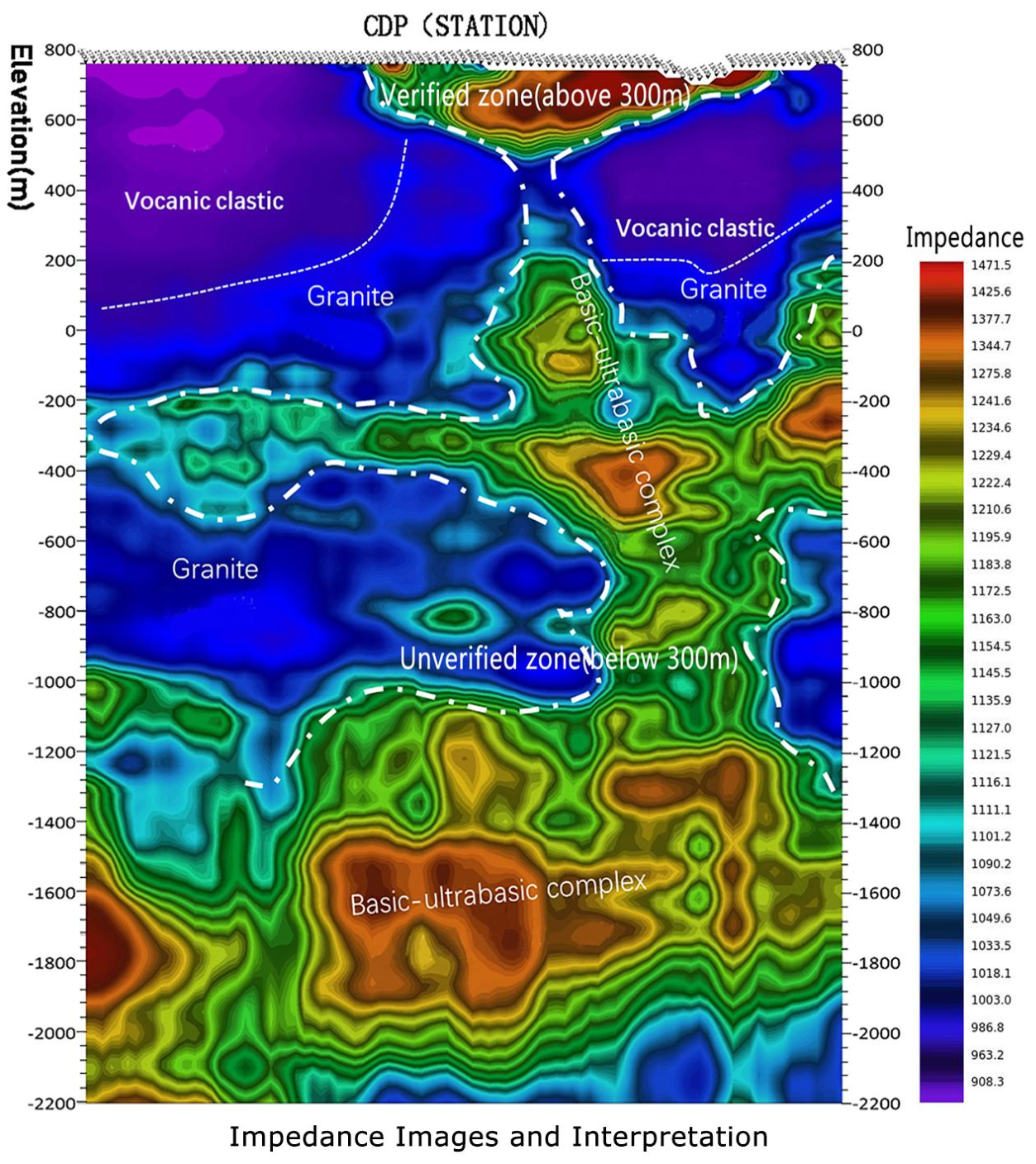Application of SRT in a copper-nickel deposit in Xinjiang, China

This example concerns the application of SRT in a copper-nickel deposit located in the Xinjiang Uygur Autonomous Region. The surrounding rocks consist of a basic-ultrabasic complex and Ordovician volcaniclastic rocks, with granite underlying the volcaniclastic rocks. Geochemical data suggested the presence of a conduit for basic-ultrabasic intrusives, but this had not been identified through drilling or other geophysical methods. There was a dispute as to whether the area had further potential for prospecting.
The high wave impedance anomaly extends to a depth of 3000 m in the profile. In this area, the basic-ultrabasic complex has the highest density among all rocks, followed by granite, and the lowest density is observed in the volcaniclastic rocks. If the high wave impedance anomaly is defined as the basic-ultrabasic complex, its root can be traced to a depth of 3000 m.
The profile clearly depicts the spatial distribution of the drilled and delineated basic-ultrabasic complex and ore body. The geological structures of the fine-necked complex rock, which invaded from the deep, are clearly visible, and the distribution characteristics of the deep complex rock are thoroughly analyzed. The pattern of “pulsating” upwelling can be observed from elevations of -400m to -1600m, similar to the copper-nickel ore metallogenic pattern.
A basic geological analysis of the SRT section can confirm the presence of basic-ultrabasic intrusions in the depths, suggesting significant prospecting potential for associated copper-nickel deposits at deeper levels.